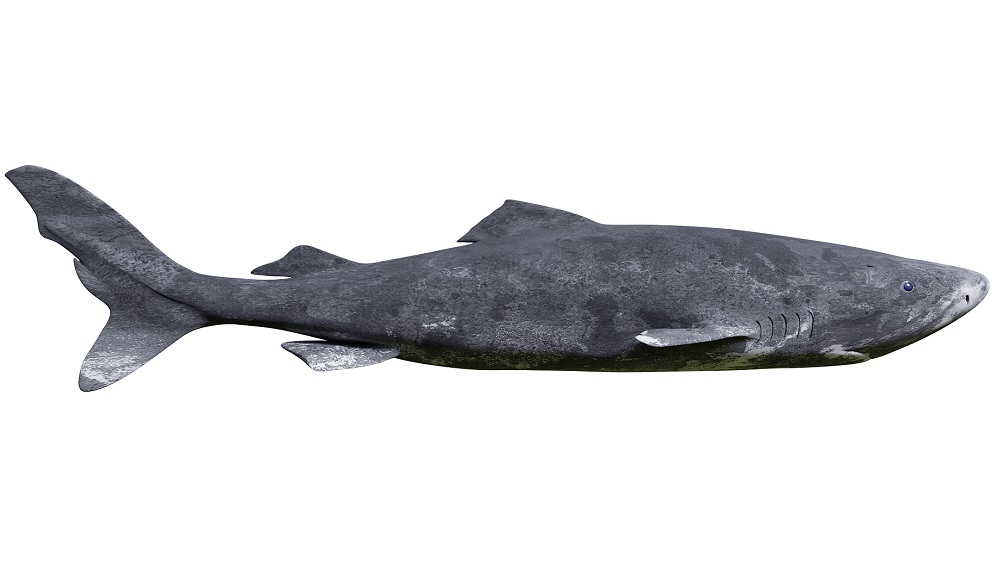Scientists have compiled the most complete genome ever of the Greenland shark, an exceptionally long-lived species. Living up to 400 years probably has a lot to do with superior DNA repair mechanisms.
Methuselahs of the sea
Greenland sharks, giant, slow-moving abyss dwellers, hold the title of the longest-lived vertebrate. While estimating a wild species’ maximum lifespan is challenging, Greenland sharks are thought to live to about 400, give or take a century [1]. The closest other shark species can get to that is 100 years, which is already respectable.
Scientists have been studying Greenland sharks in an attempt to understand the origins of their exceptional longevity. In a new paper, currently published as a pre-print that has not yet been peer-reviewed, a group of researchers report having compiled the most complete Greenland shark genome ever. This allowed them to make a few educated guesses.
Don’t let it break
Just like the Greenland shark itself, its genome is gigantic and full of repetitive sequences. Those account for 70% of the shark’s genome and consist mostly of retrotransposons: remnants of retroviruses that have inserted their genetic code into their hosts’ genomes over the eons of evolution. Some retrotransposons are still able to reproduce by copying themselves and inserting new copies back into the genome. Retrotransposon activity has been linked to multiple hallmarks of aging [2], and long-lived species must develop ways to mitigate it.
The researchers noticed the impressive conservation of gene order (synteny) between the Greenland shark and other shark species, such as the great white shark, even though they diverged about 250 million years ago. When we hear that sharks haven’t changed since the dawn of time, that’s what it means, genetically. “Overall, despite an evolutionary distance of several hundred million years between them,” the researchers write, “the Greenland shark and the great white shark show striking similarities in their genomic structure and organization.”
However, there still must be something in the Greenland shark’s genome that makes it live four times longer than any other shark species. Often, mechanisms that prolong lifespan involve gene duplication. For instance, elephants have several copies of the p53 gene, a crucial tumor suppressor [3].
When the researchers tested the Greenland shark’s genome for gene duplication, they found 81 genes that exist as single copies in all other members of Elasmobranch, a subclass of animals that includes sharks and rays, but have multiple copies in the Greenland shark. Those genes behave a lot like a network and, according to gene ontology analysis, are related to double-strand DNA break repair.
Interestingly, although p53 appears to act as this network’s master regulator, it exists as a single copy. However, that single p53 gene also carries a mutation specific to the Greenland shark.
“Taken together,” the authors conclude, “duplications of genes associated with DNA repair and the p53 pathway appear to distinguish the extremely long-lived Greenland shark from other Elasmobranch species, outlining the path for additional analyses and validations.”
The researchers also identified genes showing positive selection, i.e., representing significant evolutionary changes in the Greenland shark compared to closely related species. Interestingly, only eight such genes were found, which is more evidence that even relatively minor genetic changes can facilitate a massive lifespan extension.
The arms race
The authors hypothesize that what appears to be the Greenland shark’s superior DNA repair ability may have something to do with the abundance of retrotransposons in its genome. Since retrotransposons can themselves cause double-strand DNA breaks, it is possible that retrotransposon activity caused the development of highly efficient DNA repair mechanisms in sort of an arms race.
The researchers made the Greenland shark’s genome and troves of related data available to everyone via a dedicated genome browser. This means that you can try your luck in discovering other possible mechanisms that allow this amazing animal to outlive humans by a factor of four.
The expansion of retrotransposon sequences in both species contributed substantially to the increased genome sizes. In the case of the GLS, we have provided evidence that this mechanism may have contributed to the expansion of DNA repair gene sequences. Given that retrotransposons themselves are a source of double-strand breaks (Warkocki 2023), our findings suggest that the evolution of DNA repair genes and retrotransposons may be interlinked in the GLS. Specifically, retrotransposon activity may have led to the expansion of DNA repair-associated retrogenes, which, in turn, allowed for the tolerance of higher retrotransposon activity.
Literature
[1] Nielsen, J., Hedeholm, R. B., Heinemeier, J., Bushnell, P. G., Christiansen, J. S., Olsen, J., … & Steffensen, J. F. (2016). Eye lens radiocarbon reveals centuries of longevity in the Greenland shark (Somniosus microcephalus). Science, 353(6300), 702-704.
[2] Gorbunova, V., Seluanov, A., Mita, P., McKerrow, W., Fenyö, D., Boeke, J. D., … & Sedivy, J. M. (2021). The role of retrotransposable elements in ageing and age-associated diseases. Nature, 596(7870), 43-53.
[3] Abegglen, L. M., Caulin, A. F., Chan, A., Lee, K., Robinson, R., Campbell, M. S., … & Schiffman, J. D. (2015). Potential mechanisms for cancer resistance in elephants and comparative cellular response to DNA damage in humans. Jama, 314(17), 1850-1860.








